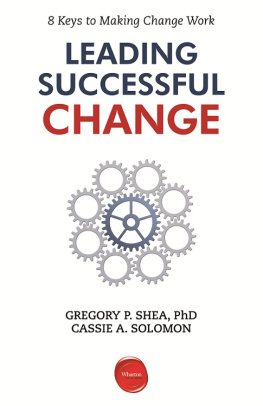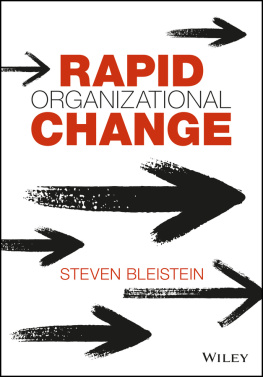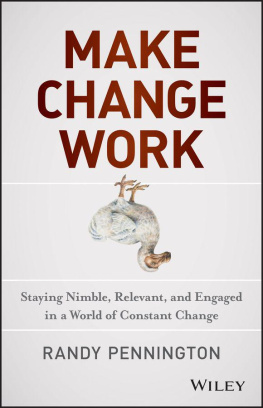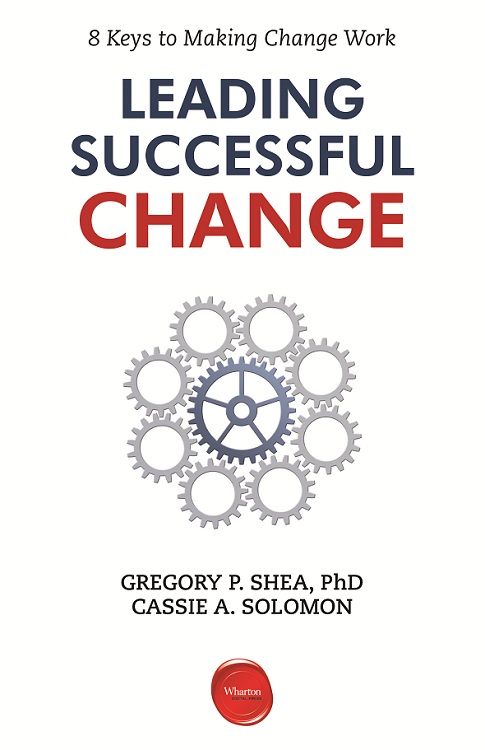Gregory Shea - Leading Successful Change: 8 Keys to Making Change Work
Here you can read online Gregory Shea - Leading Successful Change: 8 Keys to Making Change Work full text of the book (entire story) in english for free. Download pdf and epub, get meaning, cover and reviews about this ebook. year: 2013, publisher: Wharton Digital Press, genre: Business. Description of the work, (preface) as well as reviews are available. Best literature library LitArk.com created for fans of good reading and offers a wide selection of genres:
Romance novel
Science fiction
Adventure
Detective
Science
History
Home and family
Prose
Art
Politics
Computer
Non-fiction
Religion
Business
Children
Humor
Choose a favorite category and find really read worthwhile books. Enjoy immersion in the world of imagination, feel the emotions of the characters or learn something new for yourself, make an fascinating discovery.
- Book:Leading Successful Change: 8 Keys to Making Change Work
- Author:
- Publisher:Wharton Digital Press
- Genre:
- Year:2013
- Rating:5 / 5
- Favourites:Add to favourites
- Your mark:
Leading Successful Change: 8 Keys to Making Change Work: summary, description and annotation
We offer to read an annotation, description, summary or preface (depends on what the author of the book "Leading Successful Change: 8 Keys to Making Change Work" wrote himself). If you haven't found the necessary information about the book — write in the comments, we will try to find it.
Why do as many as 75% of change initiatives fail?
We live in an era where constant change is the norm rather than the exception. Given globalization, increased competition, and constant technological turnover, no organization can run in place: change is not optional. However, the sad fact is that the vast majority of change efforts fail. As authors Gregory P. Shea and Cassie A. Solomon argue, they do not fail for a lack of trying or leadership. Chances are you have led or been part of a failed change. But why did it fail and how can the next change be successfully implemented?
In this essential guide, authors Gregory P. Shea and Cassie A. Solomon deal with the real reasons change efforts failand how that failure can be avoided. They argue that changereal changemeans changes in behavior and that the work environment itself is the greatest obstacle to making behavioral change stick. They reveal a tested method for leading successful change, which they have developed over a combined 50 years of helping organizations do just that.
In Leading Successful Change, they share the 2 tenets for making successful change; how to create a scene that will provide a vision of the future; the 8 Levers of Change, a tried-and-true method for designing the work environment to support the changes; and how winning companiesfrom IKEA to a hospital near youare successfully implementing change.
Change is not optional and it is difficultbut it is also not impossible. Shea and Solomon present a thorough, well-researched explanation of how to make change work.
|
Why do as many as 75% of change initiatives fail?
We live in an era where constant change is the norm rather than the exception. Given globalization, increased competition, and constant technological turnover, no organization can run in place: change is not optional. However, the sad fact is that the vast majority of change efforts fail. As authors Gregory P. Shea and Cassie A. Solomon argue, they do not fail for a lack of trying or leadership. Chances are you have led or been part of a failed change. But why did it fail and how can the next change be successfully implemented?
In this essential guide, authors Gregory P. Shea and Cassie A. Solomon deal with the real reasons change efforts failand how that failure can be avoided. They argue that changereal changemeans changes in behavior and that the work environment itself is the greatest obstacle to making behavioral change stick. They reveal a tested method for leading successful change, which they have developed over a combined 50 years of helping organizations do just that.
In Leading Successful Change, they share the 2 tenets for making successful change; how to create a scene that will provide a vision of the future; the 8 Levers of Change, a tried-and-true method for designing the work environment to support the changes; and how winning companiesfrom IKEA to a hospital near youare successfully implementing change.
Change is not optional and it is difficultbut it is also not impossible. Shea and Solomon present a thorough, well-researched explanation of how to make change work.
Gregory Shea: author's other books
Who wrote Leading Successful Change: 8 Keys to Making Change Work? Find out the surname, the name of the author of the book and a list of all author's works by series.











